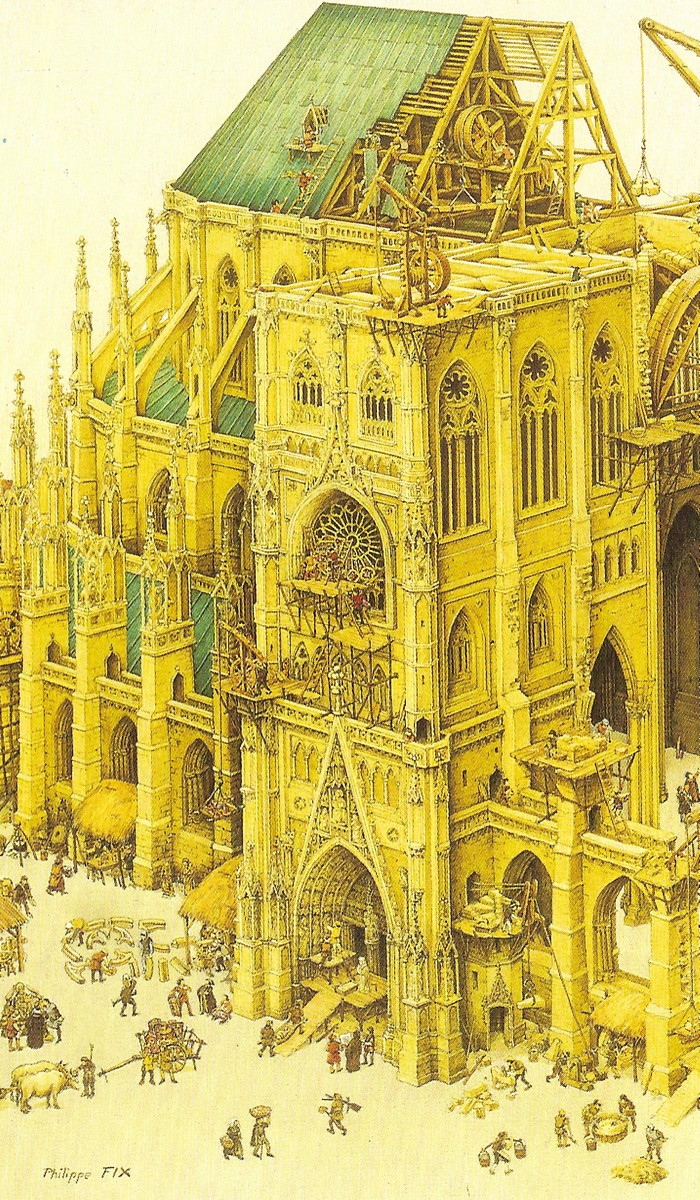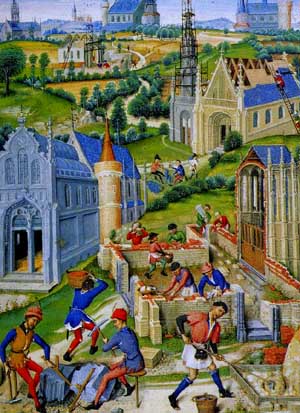The flying buttress is stone but starts out as wood. It takes the weight of the wall and directs it downward instead of out.
I didn't get to travel all of Europe, but I stayed for a couple weeks in Amsterdam and still didn't see everything I went after. My favorite painters are mostly Dutch and I spent whole days in certain places, like this church. All the potheads thought I was funny to travel there and spend all my time in old churches and museums. I actually stayed in a hostel in the Red Light District; it's the only way to go! Glad I did because it gave me more money and I spent almost zero time there except to sleep, and I was so tired I could have slept on a rock outside for all it mattered at the end of a day.
So I'd argue the skill is there, just not cheap nor abundant. It never was abundant really but there are people in Europe whose job is to maintain this stuff in the original context. Restorers. I studied oil painting and can make all my own materials just like they did.
Yeah, I forgot about all the wood INSIDE the church...
View attachment 7062151 What you can't see is the detail in this wood. The piece in the middle is actually a very important piece by a Renaissance woodcarver and in Dutch is says "In the year 16xx we threw out the catholics and other degenerates", essentially, in Latin. When it was a cathedral, they used to let the homeless sleep on the floors. All those seats are where the rich greedbags of Amsterdam sat. They have name plates and each one is carved intricately different from the other. I remember this one with pig heads...
Note the relief in the stone... Each one of those rectangles is a grave and the ones with the most embellishment are those of Rembrandt, William of Orange, etc. Not sure THEY were specifically buried in this one, I think William of Orange was but he's inside the wall somewhere IIRC. Walls are so think here that there are hidden passages and small rooms I found inside them. Like I said, I got to explore it all alone, it's awesome there right before Christmas when nobody is around.
View attachment 7062153 Here's another from the other side. The floors are usually totally empty and it's used a lot for exhibiting art. It wasn't NEARLY this well lit when I was there in NOV/DEC 2004. There are no interior electrical lights. I wanna say the ceiling has an image of the stars and was in blue but maybe I'm thinking of the New Church near Anne Frank's house. Anyway, you see the extensive use of carved wood inside. This church also has a stained glass piece called "The Annunciation" (there's a million works called that but this one is special).
View attachment 7062161 One of the stained glass windows. These are amazing, the detail and craftsmanship is unreal. This thing is huge.
View attachment 7062159 Exhuming graves during restoration.
View attachment 7062160 Same floor, more like it looked when I was there but much darker.
View attachment 7062164 Outside. Yes, it's in the middle of the Red Light District. One wall is actually part of De Wallejte (sp?), "The Wall", and is where you find the nastiest hookers dating back to who knows when. The English Channel is only a fart or two in the wind away from here so it was always full of sailors back when VOC ran everything (Dutch East Indies Corporation, first corporation ever, which did what every corporation does and got so greedy the Queen stepped in). This is where I found the fat black chicks from Aruba with US southern/Dutch accents, and the chick with a dick playing peakaboo at the end of a narrow alley where you couldn't turn around. Trapped!
View attachment 7062169 During day.
View attachment 7062175 I've got a better picture, but this is the organ, my favorite place in there. The sculpture is just unreal. The piece you're looking up at is like a cockpit for the organ player, it's pretty complex. This is where Mozart played when a child, but the actual organ instrument itself was changed or modified in the 1800's or thereabouts. Passacaglia in C Minor is the shit when belted out on this thing in person.
So yeah, lots of wood. And this is a fairly small church as far as big old churches in Europe go.






